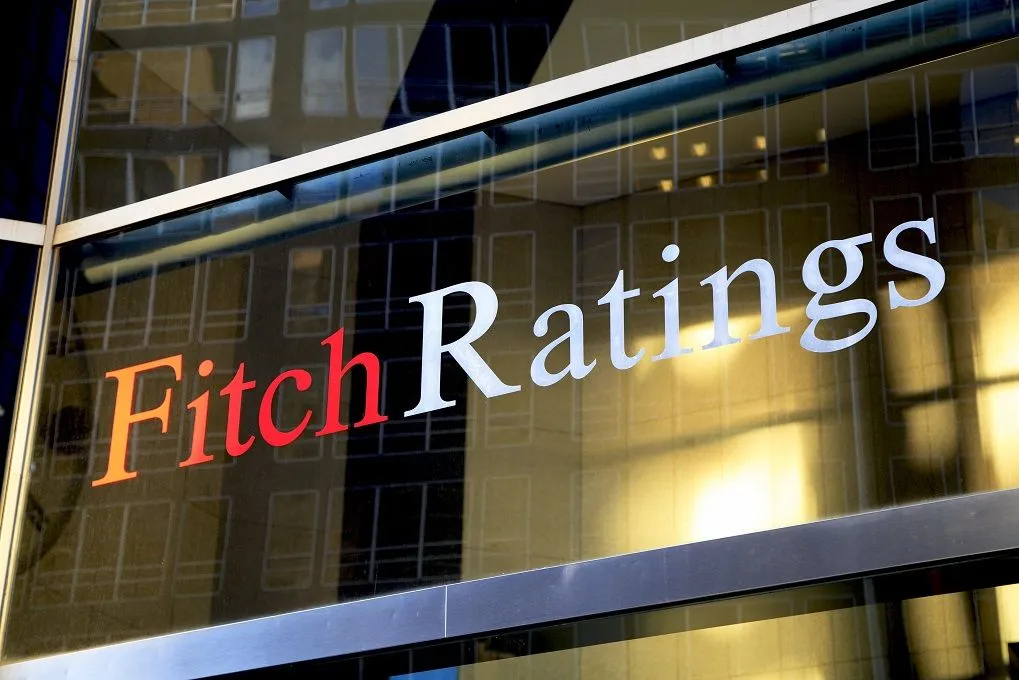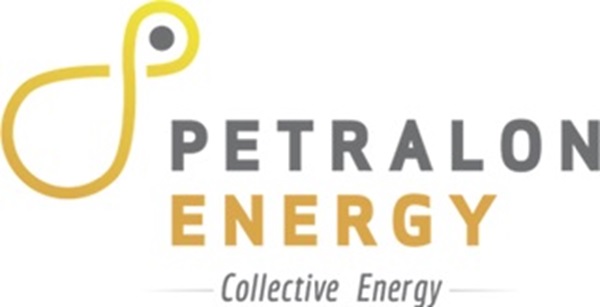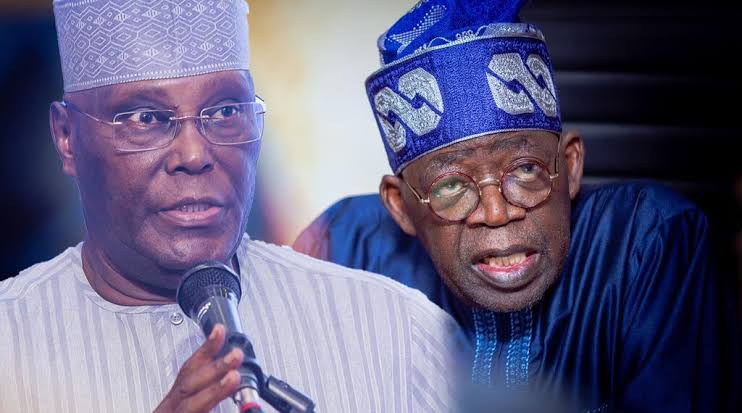After months of gruelling campaigns, former US President Donald Trump of the Republican Party and his rival in today’s US Presidential election, Vice President Kamala Harris of the Democratic Party, have surrendered their fate to American voters to decide.
This election appears like no other in US history. It will certainly go down as one of the most keenly contested, judging by the flurry of polls that suggest either candidate could win, even though Vice President Harris is slightly ahead, according to most of the polls.
According to the overall trends, rather than the individual points, Kamala Harris is just a point ahead in the national polls – with 48% to Donald Trump’s 47%.
Most Brutal Election As Polls Suggest Tight Race
The race between Democratic candidate Kamala Harris and Republican Donald Trump is still too close to call until Election Day. The polls suggest the race is still exceptionally close, and as of Monday, more than 78 million people had already voted.
According to new polling, Vice President Harris and former President Trump hold leads in different essential swing states.
The polling from The New York Times/Siena College and The New York Times/Philadelphia Inquirer/Siena College, released Sunday, found Harris garnered 49 per cent support from likely voters to Trump’s 46 per cent support in Nevada; 48 per cent support from likely voters to Trump’s 46 per cent in North Carolina; 49 per cent support from likely voters to Trump’s 47 per cent in Wisconsin; and 48 per cent support from likely voters to Trump’s 47 per cent in Georgia.
Trump came out ahead in the polls in Arizona, garnering 49 per cent support from likely voters compared to Harris’s 45 per cent. The two were tied at 47 per cent support from likely voters in Michigan and 48 per cent support from likely voters in Pennsylvania. Harris leads in the seven battleground states overall by 1 point, garnering 48 per cent support from likely voters compared to Trump’s 47 per cent.
The polling comes two days away from this year’s Election Day, which will follow a chaotic and highly polarised campaign cycle that featured two assassination attempts against Trump and President Biden exiting the race.
In an average of national polls from The Hill/Decision Desk HQ, Trump is ahead of Harris by 0.2 points, with the former president earning 48.3 percent support and the vice president 48.1 percent.
The Times/Siena polling also showed good news for Democratic Senate candidates in the swing states. In seven states, 50 percent of the likely voters said they would “be more likely to vote for” a Democrat in the race, versus 45 percent saying they would be more likely to vote for a Republican.
The Times/Siena and Times/Inquirer/Siena polling took place between Oct. 24 and Nov. 1. There were 7,879 voters and a margin of sampling error of plus or minus 1.3 percentage points, with each state having around a plus or minus 3.5 percentage point margin of sampling error.
Trump visited Virginia and North Carolina on Saturday, while Harris was also in North Carolina and made a surprise appearance on Saturday Night Live in New York City.
The national polls are tightening even further. Harris is now only ahead by one point, within the margin of error.
Looking at the overall trends, rather than the individual points, Kamala Harris is just a point ahead in the national polls – with 48% to Donald Trump’s 47%.
However, the national vote shares will not determine the winner, which will likely be decided in seven battleground states that were very close last time and could be decisive in this election.
Trump has an edge of one to three points in each of Georgia, Arizona and North Carolina.
The other battlegrounds are even tighter. Trump is polling slightly higher in Pennsylvania and Nevada, while Harris looks marginally ahead in Michigan and Wisconsin.
It’s important to remember: Right now, the leads in the swing states are so small that it’s impossible to know who is really ahead. The individual polls used to create these averages usually have a margin of error of around three to four percentage points. Because the leads in all seven states fall within that margin, it means, in reality, either candidate could have the edge.
Donald Trump and Kamala Harris sent their closing messages to voters on Monday, the last day of campaigning before America elects its next president.
On Monday, both candidates were in a final sprint across crucial battleground states, with Harris campaigning in Pennsylvania and Trump heading to North Carolina, Pennsylvania, and Michigan.
What are swing states, and why do they matter? Watch the BBC’s North America editor Sarah Smith explain that here.
On Sunday, Harris vowed to do everything in her power to “end the war in Gaza” while Trump made claims, without providing any evidence, of election fraud in Pennsylvania.
The polls suggest the race is still exceptionally close, and more than 78 million people have already voted.
Where Each Candidate Stands On Key Issues
In rally after rally, Kamala Harris and Donald Trump have pushed – and been pushed on – several issues that come to define this election. Here’s a reminder of each candidate’s view on some of them:
The economy: Repeatedly billed as the biggest issue for voters, Harris, as vice president, has worked with President Biden to pass legislation – including significant infrastructure and green energy investments. However, while growth and job creation have been strong, inflation and high interest rates continue to hit American wallets. Trump has, therefore, retained a persistent polling advantage on the issue, with a campaign promise to “end inflation and make America affordable again”.
Immigration: Harris has repeatedly voiced her continued support for the cross-party border security bill, which congressional Republicans torpedoed in February 2024 at Trump’s urging. She said she would revive the bill and sign it into law. Trump has vowed to seal the US border – after the number of border crossings hit record levels at the end of 2023 – and launch the biggest mass deportations of undocumented migrants in US history.
Abortion: Harris, who’s long supported abortion rights, has made the issue central to her campaign and says she wants legislation that’d safeguard reproductive rights nationwide. Trump has struggled to find a consistent message on abortion – after he appointed three Supreme Court judges who went on to play a pivotal role in the overturning of Roe v Wade.
Israel-Gaza war: Harris has been a long-time advocate for a two-state solution in the region and has called for an end to the war in Gaza. But she has not supported the arms embargo on Israel. Trump has positioned himself as a staunch supporter of Israel and condemned pro-Palestinian supporters on US college campuses. At times, he’s been critical of the way Israel has conducted the war.
Climate change: On numerous occasions, Trump has called climate change a “hoax” perpetrated by the Chinese government to try to weaken the U.S. economy.
He also consistently portrays environmental regulations as foolish because they are anti-business and has attacked the Environmental Protection Agency (EPA) and its staff of “rogue bureaucrats,” who he blames for enacting rules that inhibit the oil and gas industry.
Trump also routinely misrepresents scientific findings on the impacts of climate change. “The oceans are going to rise one-eighth of an inch over the next 300 years,” Trump said at a campaign rally in July. “We’ll have a little bit more beachfront property; that’s not the worst thing in the world.”
Harris’s position is different. During the September presidential debate, Harris chided Trump for saying climate change is a “hoax.” Still, she proceeded to tout what some might consider a contradictory message when fighting rising global temperatures.
“As vice president over the last four years, we have invested over $1 trillion in a clean energy economy while we have also increased domestic gas production to historic levels,” Harris said.
Unlike Trump, Harris regularly discusses climate change in terms of its already significant economic impact on the American people.
“I do believe that elected leaders must protect our communities,” Harris said during a 2022 briefing on climate resiliency in Miami. “And the climate crisis has made that duty more important than ever.”
Harris has also been consistent about the need to slash greenhouse gas emissions.
“The science is clear,” she said in Miami. “Extreme weather will only get worse, and the climate crisis will only accelerate.’’
She has not explained how continuing to increase domestic gas production will help address what she has called an “existential threat.”
European Capitals Watch With Hopes, Fears
The mood in Europe suggests many are rooting for Kamala Harris over Donald Trump in this tight contest.
Europe is paying close attention to the US presidential election on Tuesday, which the polls said is currently too close to call. Several vital states are in play at the same time, and neither Vice President Kamala Harris nor former President Donald Trump has been able to establish a clear lead.
At stake are not just domestic US issues but the future of the country’s trade relations and foreign policy — in particular, its relationship with NATO in a time of war.
George Dimitropoulos in Athens, Greece, a recent poll showed that 46% of Greek citizens believe the US’s first female vice president will also become the first female president. In comparison, only 32% of citizens think Donald Trump will return to the White House.
As for Greek national interests, 30% of Greeks believe that Kamala Harris is closer to their priorities — and only 10% believe that Donald Trump will be better for their country.
In Berlin, Germany, a lot is riding on these elections. Polling shows that two-thirds of Germans would prefer Harris to be the next US president, with only 12% preferring a Trump victory. On the domestic front, those 12% also say they would vote for the AfD.
Regardless of the outcome, the US will likely look increasingly toward its problems, which could have severe consequences for NATO.
The government has turned the US presidential election into a domestic political issue in Budapest, Hungary. Even the announcement of next year’s budget has been postponed because if Trump wins, there will be peace in Ukraine, and peace requires a different budget from war.
Viktor Orbán was one of the first foreign leaders to back Trump in 2016 and has stuck with him ever since. Polls show his voters are on board, with 75% wanting Trump to win and only 1% supporting Harris.
However, of the opposition parties, only the far-right Our Country Party’s voters appear to be backing Trump.
In Lisbon, Portugal, people are rooting for Kamala Harris over Trump. A study by Intercampus shows that 70% would vote for the Democratic candidate. According to the survey, Portugal’s citizens mostly believe Harris is the likely winner; only 28% said they were convinced that Donald Trump would win.
As for the impact of the outcome, about 65% believe that the choice will influence the economy, social progress and management of armed conflicts in Portugal.
In Madrid, Spain, a recent report by the Franklin Institute of the University of Alcalá reveals that 75% of Spaniards believe a Harris victory would be better for Spain than Trump’s return.
Six out of 10 Spaniards think that the Democratic candidate is more likely to win. While the socialist government has openly announced its support for Kamala Harris, the ruling Popular Party has decided not to take an official position before the election.
In Paris, The US elections are attracting much public interest in France. According to a survey by YouGov, 1 in 2 French people said they have been following the presidential campaign for several weeks.
More than half are men and live in Paris. 55% of those questioned want Kamala Harris to win, while only 1 in 5 French people would vote for Trump.
Finally, one in 3 people think that Kamala Harris is the best candidate to solve the global crises in Ukraine and the Middle East. Only 22% believe Trump would be the best on foreign policy.
People in Rome, Italy, are watching these elections closely, feeling that a lot is at stake. These elections won’t just shape the future of the US; from the wars in Ukraine and the Middle East to the strength of China, they will also impact the global order and certainly Europe.
According to a recent poll published in Italy by YouTrend, most Italians would choose Kamala Harris as the new president, with 78% supporting her and only 22% backing Donald Trump.
Wall Street Struggles As Uncertainty Around US Election Grows
U.S. stock indexes slipped in choppy trading on Monday as investors braced for a pivotal week for global markets. Americans will elect a new president, and the Federal Reserve will likely cut its benchmark policy rate.
Caution prevailed as the winner of the tightly contested election between Democratic candidate Kamala Harris and Republican Donald Trump might not be known for days after the voting ends on Tuesday.
Some so-called “Trump trades” lost ground after a recent poll showed Harris leading in Iowa, triggering a retreat in the dollar, bond yields and bitcoin.
Harris’ odds have improved on several betting sites, an election indicator many market participants monitor closely.
Stocks turned lower despite a drop in the benchmark U.S. 10-year Treasury yield. Volatile trading is expected in the run-up to the election outcome as investors await clarity on the policy implications.
“It’s a bit of calm before the storm this week … the bond market may be fading a little bit from the highs last week on some of the new poll numbers coming out, suggesting a tighter race,” said Adam Turnquist, chief technical strategist for LPL Financial.
“The playbooks of the 2016 and 2020 (elections) might be thrown out the window… what dictates the level of volatility will be when we get results.”
CBOE’s VIX measure of expected equity volatility (.VIX) opens a new tab and trades at 22.54, well above its 30-day moving average of 19.45.
Stocks viewed as bets on a Trump win also jumped between losses and gains. Trump Media & Technology Group (DJT.O) opened a new tab and was last up 1.4%.
Lower bond yields boosted rate-sensitive small-cap stocks, with the Russell 2000 (.RUT) opening a new tab, gaining 0.5%.
Investors, meanwhile, remained essentially sure of a 25 basis point interest-rate cut by the Fed in its November meeting, whose decision is expected on Thursday.
The Dow Jones Industrial Average (.DJI) opened a new tab and fell 397.83 points, or 0.95%, to 41,654.14. The S&P 500 (.SPX) opened a new tab and lost 27.52 points, or 0.48%, to 5,701.28. The Nasdaq Composite (.IXIC) opened a new tab and lost 73.98 points, or 0.41%, to 18,165.94.
An index of energy stocks (SPNY) opens a new tab that rose 1.4% as oil prices rose after OPEC+ delayed plans to increase output.
Most megacap stocks lost ground, with Tesla (TSLA.O) opening a new tab, dropping 1.8% as the EV maker’s China-made vehicle sales fell in October.
However, chip heavyweight Nvidia (NVDA.O) opened a new tab and rose 1.6% after S&P Dow Jones Indices said the company would replace Intel’s (INTC.O) on Friday, opening a new tab in the Dow Jones Industrial Average. Intel’s 4.3% slide weighed on the Dow.
European Stocks Close Lower Ahead of US Election
European markets closed lower on Monday as traders awaited the U.S. presidential election due on Tuesday.
The pan-European Stoxx 600 provisionally closed down by 0.3%. Regional bourses and sectors were broadly in the red.
Banks led the gains by sector, trading up 0.7%, while technology stocks closed 1.1% lower.
Oil shares soared Monday as crude prices rose more than 2%, following OPEC+’s decision to delay plans to increase production. The sector closed up by 0.4%.
Shares of Burberry closed 4.8% higher after a media report over the weekend suggested that its peer Moncler is mulling a bid for the British luxury retailer.
Global markets are gearing up for a critical week, with the latest U.S. presidential election poll from NBC News showing a “deadlocked race” between former President Donald Trump and current Vice President Kamala Harris.
Global market aftershocks may hinge heavily on which party takes charge of Congress due to the vote.
A divided U.S. House of Representatives and Senate would likely maintain the political status quo of the world’s largest economy.
A Republican or Democratic sweep, however, would likely be coupled with a White House victory for the same party and could translate into fresh spending plans or a tax overhaul.
10 Reasons Either Harris Or Trump Can Win
Former US President Donald Trump is facing the most brutal battle of his life in his bid to return to the White House, which he left about four years ago.
The Republican candidate faces a real threat from his rival, Democratic Vice President Kamala Harris, in a deadlocked race—both at the national level and in the all-important battleground states.
The polls are so close, within the margin of error, that either Donald Trump or Kamala Harris could be two or three points better off – enough to win comfortably.
There is a compelling case to make for why each may have the edge when building a coalition of voters in the right places and ensuring their turnout.
There is the history-making possibility that a defeated president might be re-elected for the first time in 130 years.
- Trump could win because he is not in power
The economy is the number one issue for voters, and while unemployment is low and the stock market is booming, most Americans say they are struggling with higher prices every day.
Inflation hit levels not seen since the 1970s in the aftermath of the pandemic, giving Trump a chance to ask, “Are you better off now than you were four years ago?”
In 2024, voters worldwide threw out the party in power several times, partly due to the high cost of living post-COVID. US voters also seem hungry for change.
Only a quarter of Americans say they are satisfied with the country’s current direction, and two-thirds have a poor economic outlook.
Harris has tried to be the so-called change candidate, but as vice president, she has struggled to distance herself from an unpopular Joe Biden.
- He seems impervious to bad news
Despite the fallout from the 6 January 2021 riot at the US Capitol, a string of indictments and an unprecedented criminal conviction, Trump’s support has remained stable all year at 40% or above.
While Democrats and “Never-Trump” conservatives say he is unfit for office, most Republicans agree when Trump says he’s the victim of a political witch-hunt.
With both sides so dug in, he needs to win over enough of the small slice of undecided voters without a fixed view of him.
- His warnings on illegal immigration resonate
Beyond the state of the economy, an issue with an emotional pull often decides elections.
Democrats will hope for abortion, while Trump is betting on its immigration.
After encounters at the border hit record levels under Biden, and the influx-impacted states far from the border, polls suggest voters trust Trump more on immigration – and that he is doing much better with Latinos than in previous elections.
- A lot more people don’t have a degree than do
Trump’s appeal to voters who feel forgotten and left behind has transformed US politics by turning traditional Democratic constituencies like union workers into Republicans and making the protection of American industry by tariffs almost the norm.
If he drives up turnout in rural and suburban parts of swing states, this can offset the loss of moderate, college-educated Republicans.
- He’s seen as a strong man in an unstable world
Trump’s detractors say he undermines America’s alliances by cosying up to authoritarian leaders.
However, the former president sees his unpredictability as a strength and points out that no significant wars started when he was in the White House.
Many Americans are angry, for different reasons, with the US sending billions to Ukraine and Israel – and think America is weaker under Biden.
A majority of voters, especially men who Trump has courted through podcasts like Joe Rogan’s, see Trump as a more decisive leader than Harris.
Kamala Harris
- Harris could win because She’s not Trump
Despite Trump’s advantages, he remains a deeply polarising figure.
In 2020, he won a record number of votes for a Republican candidate but was defeated because seven million more Americans turned out to support Biden.
Harris is playing up the fear factor about a Trump return this time. She’s called him a “fascist” and a threat to democracy while vowing to move on from “drama and conflict”.
A July Reuters/Ipsos poll indicated that four in five Americans felt the country was spiralling out of control. Harris will hope voters—especially moderate Republicans and independents—see her as a candidate for stability.
- She’s also not Biden
When Biden dropped out of the race, Democrats faced near-certain defeat. United in their desire to beat Trump, the party quickly rallied around Harris. With impressive speed from a standing start, she delivered a more forward-looking message that excited the base.
While Republicans have tied her to Biden’s more unpopular policies, Harris has rendered some of their Biden-specific attack lines redundant.
The clearest of these is age—polls consistently suggested voters had real concerns about Biden’s fitness for office. The race has flipped, and Trump is vying to become the oldest person ever to win the White House.
- She’s championed women’s rights
This is the first presidential election since the US Supreme Court overturned Roe v Wade and the constitutional right to an abortion.
Voters concerned about protecting abortion rights overwhelmingly back Harris, and we’ve seen in past elections – notably the 2022 midterms – that the issue can drive turnout and have a tangible impact on the result.
This time around, ten states, including the swing state Arizona, will have ballot initiatives asking voters how abortion should be regulated. This could boost turnout in Harris’s favour.
The historic nature of her bid to become the first female president may also strengthen her significant lead among women voters.
- Her voters are more likely to show up
Harris is polling more strongly with groups more likely to vote, such as the college-educated and older people.
Democrats ultimately perform better with high-turnout groups, while Trump has made gains with relatively low-turnout groups such as young men and those without college degrees.
According to a New York Times/Siena poll, Trump holds a massive lead among registered voters who didn’t vote in 2020. A key question is whether they will show up this time.
- She’s raised – and spent – more money
It’s no secret that American elections are expensive, and 2024 is on track to be the most expensive ever.
But when it comes to spending power, Harris is at the top. She’s raised more since becoming the candidate in July than Trump has in the entire period since January 2023, according to a recent Financial Times analysis, which also noted that her campaign had spent almost twice as much on advertising.
This could play a role in a razor-tight race that will ultimately be decided by voters in swing states currently being bombarded by political ads.

 2 hours ago
25
2 hours ago
25















 English (US) ·
English (US) ·